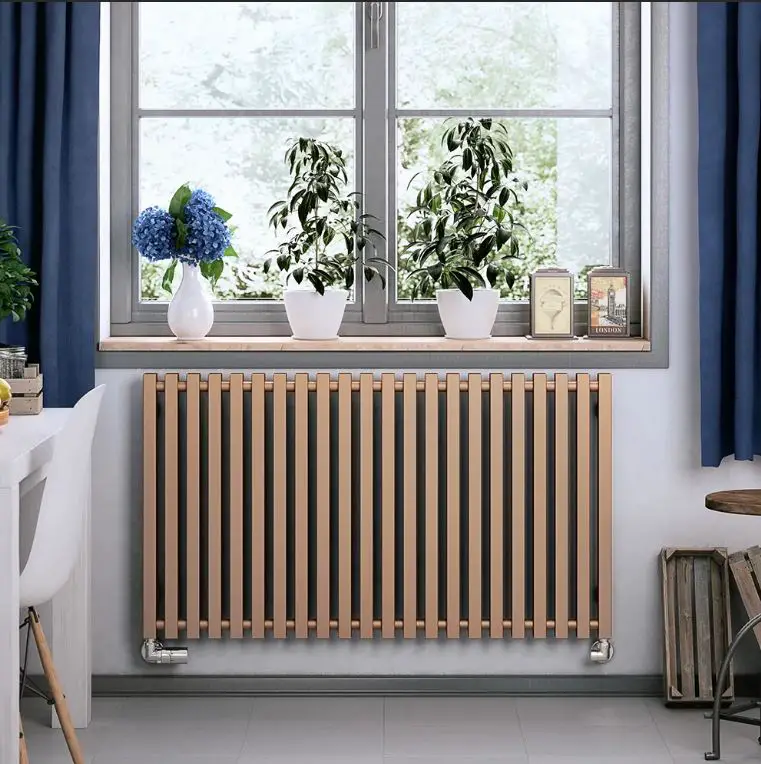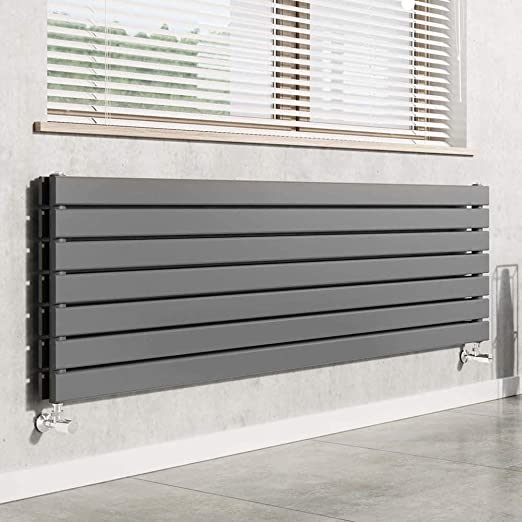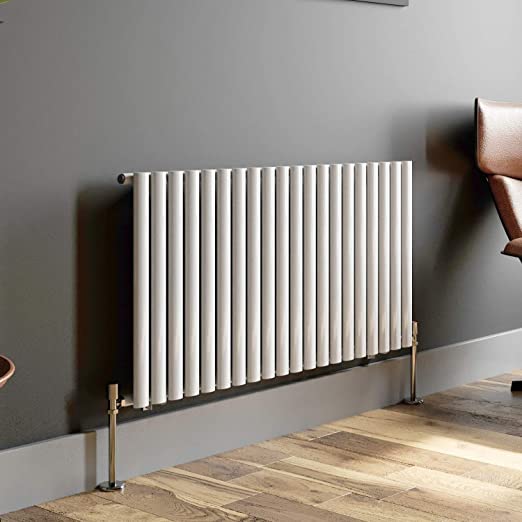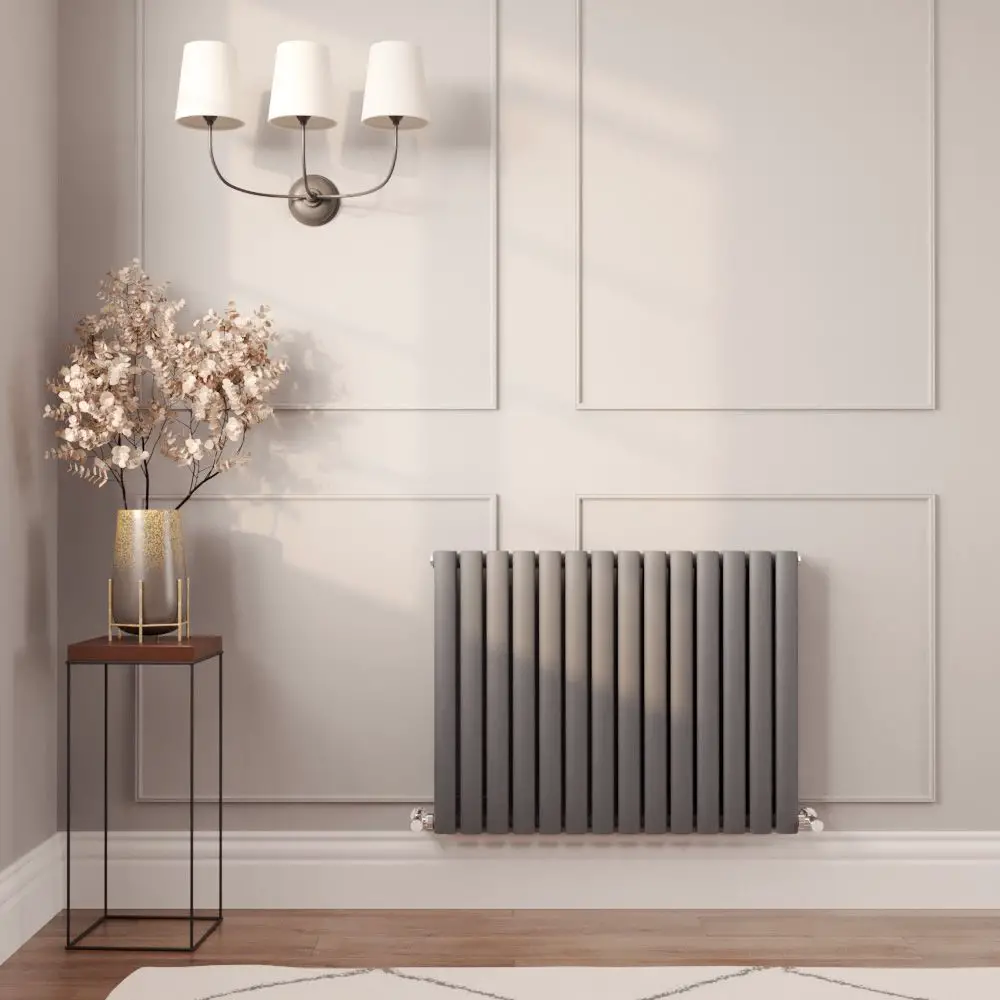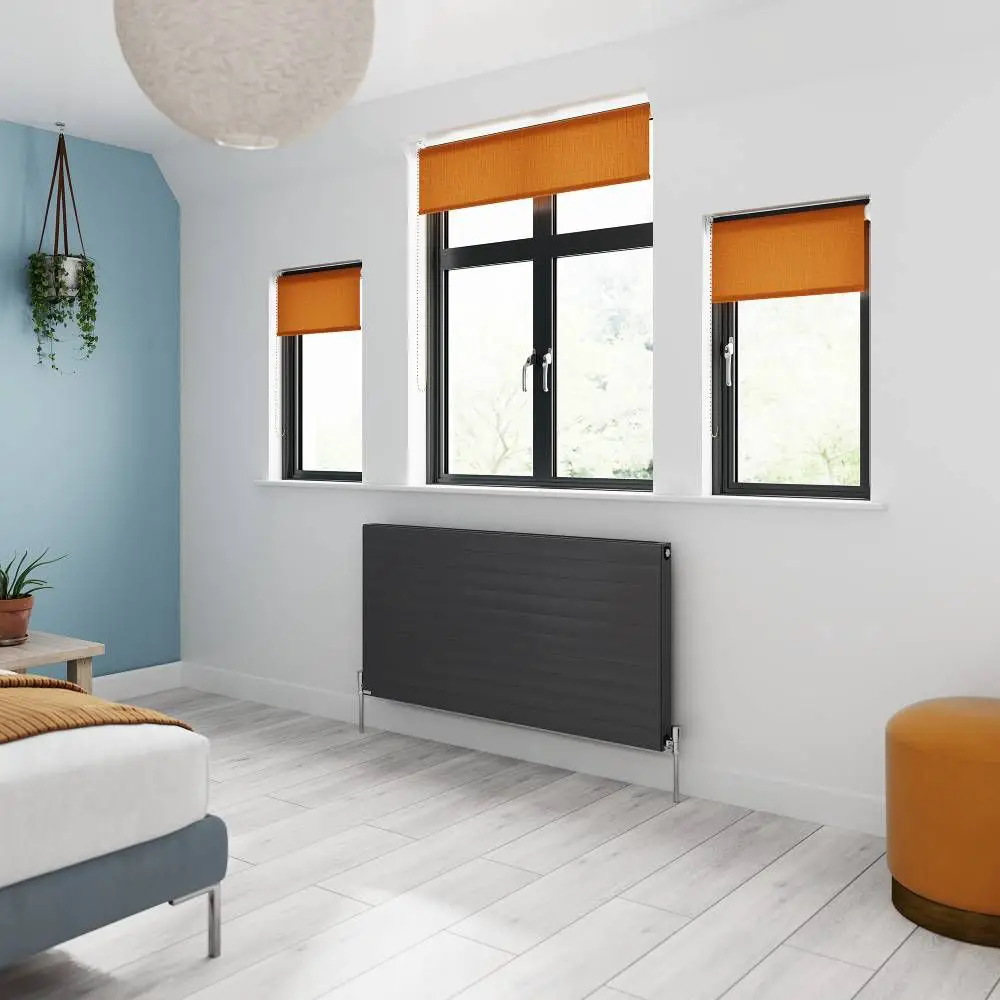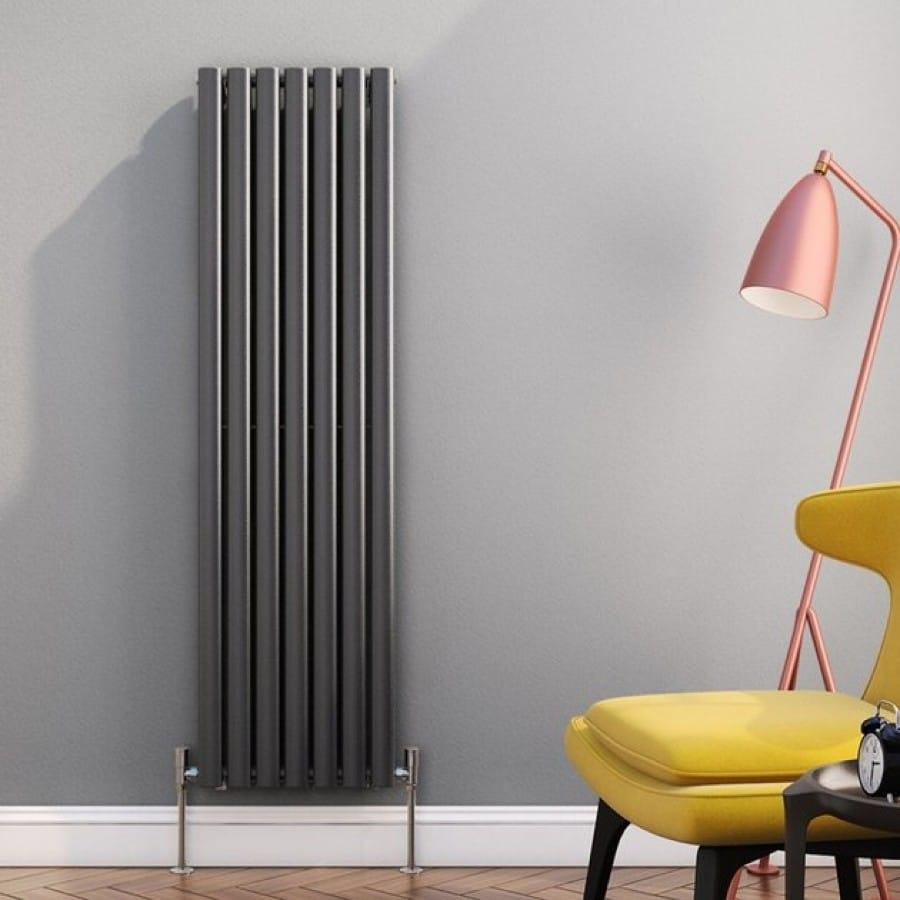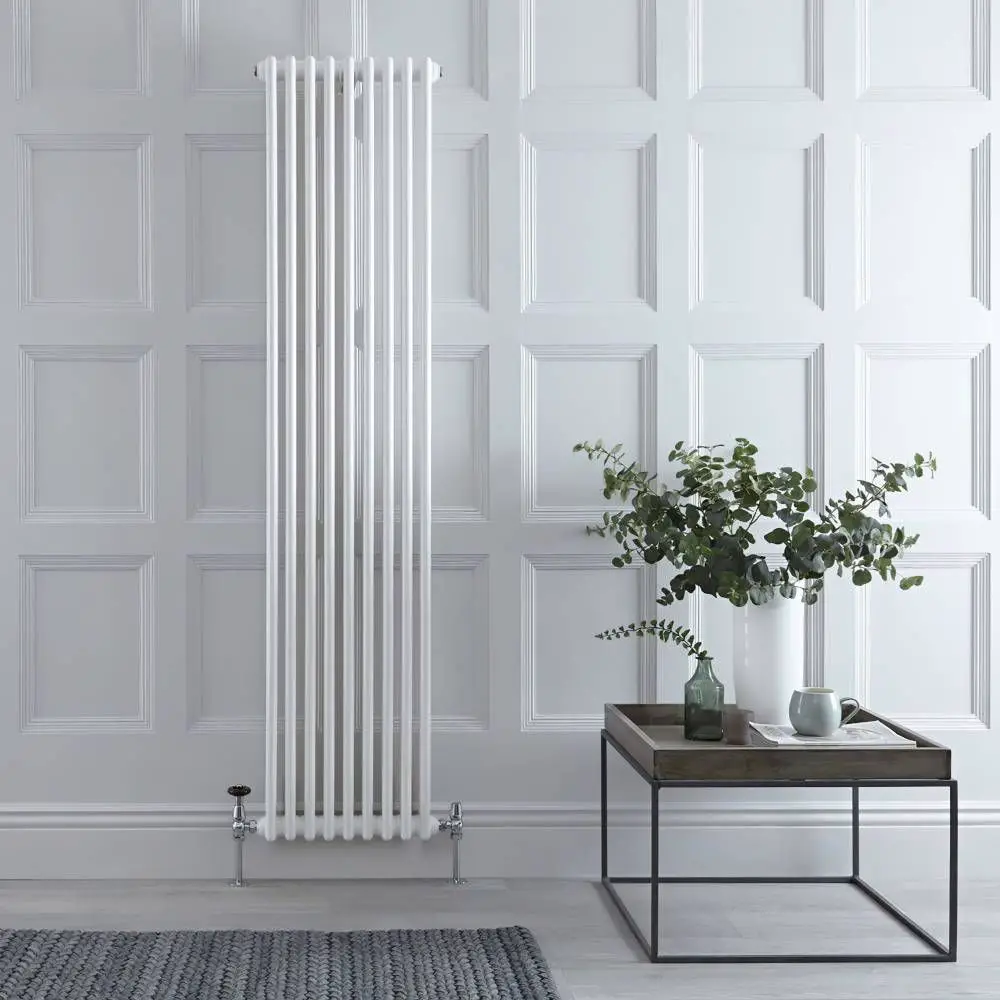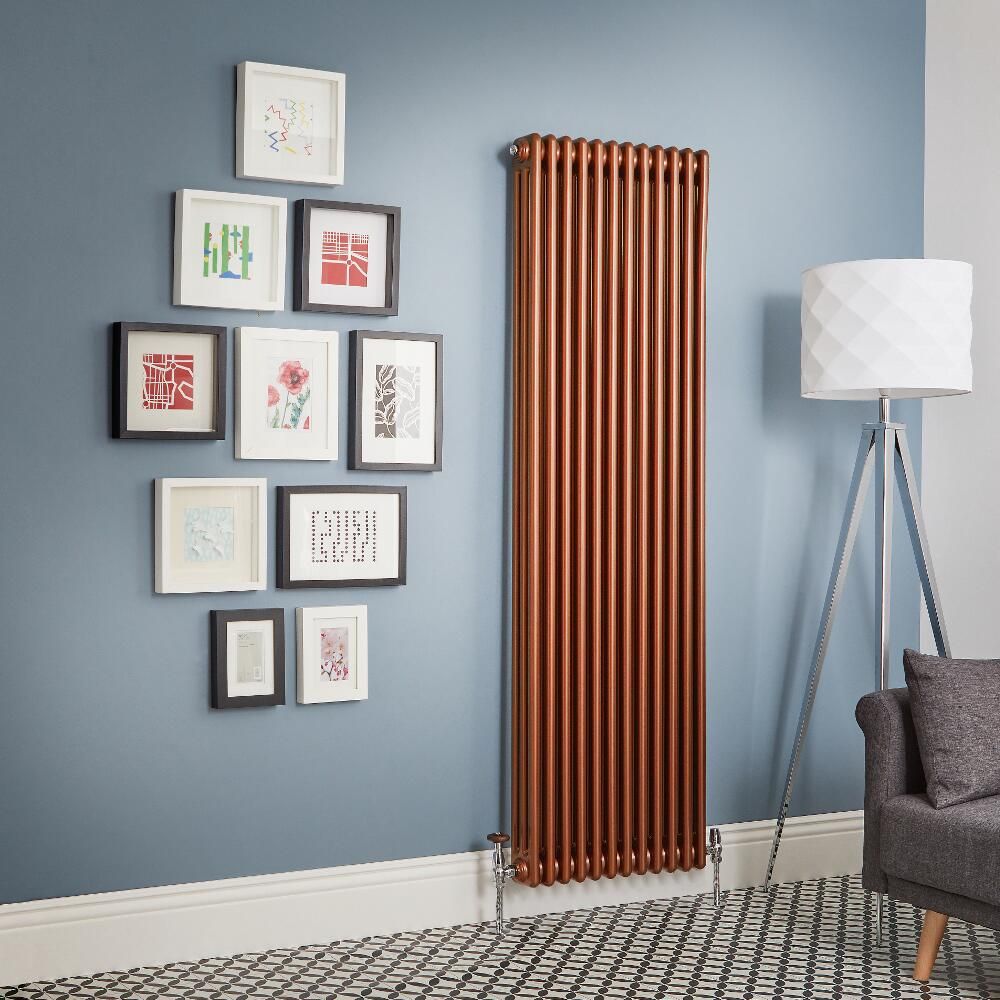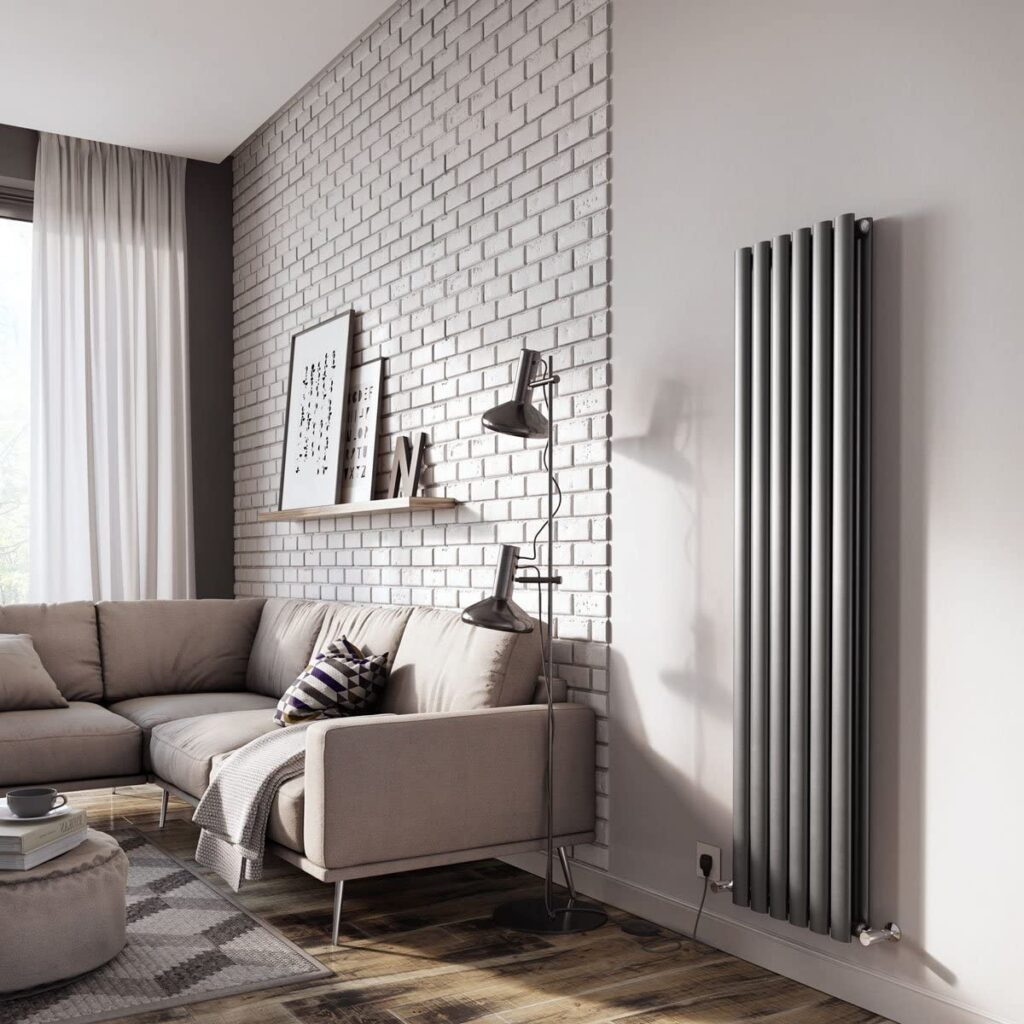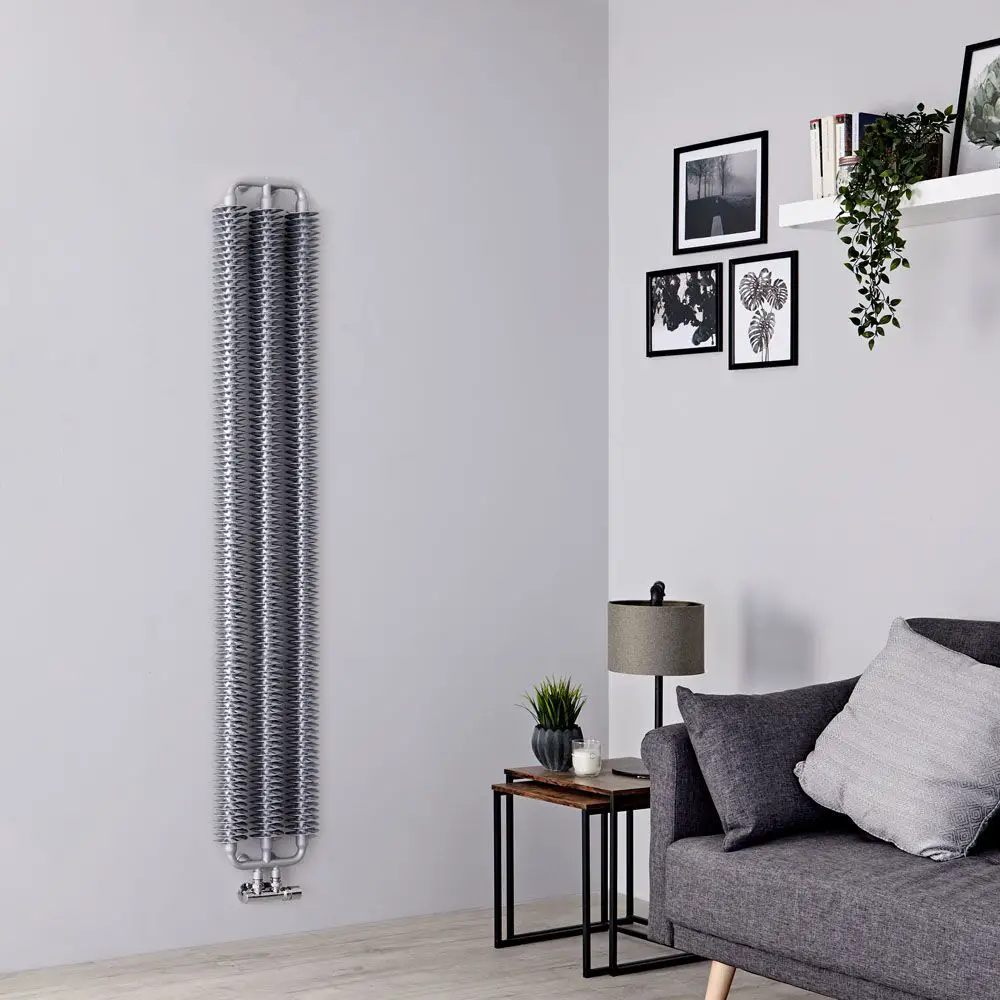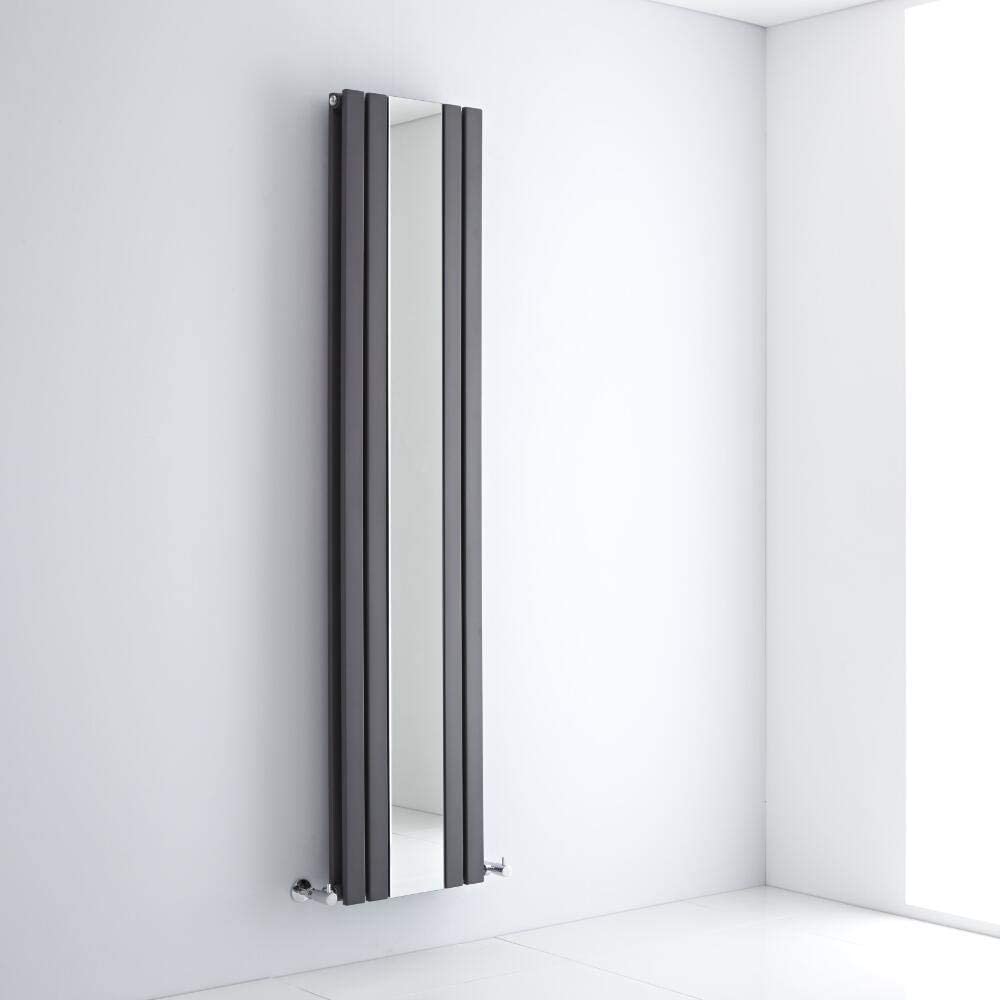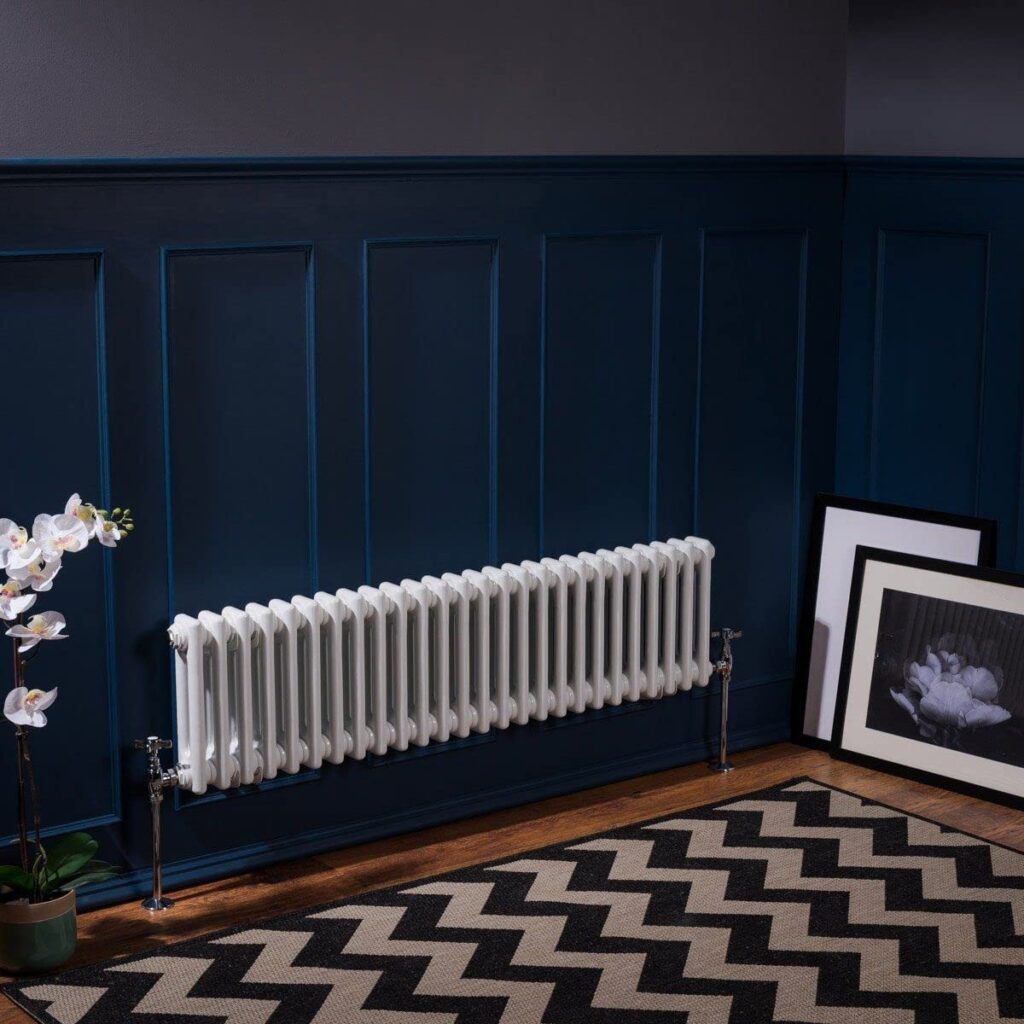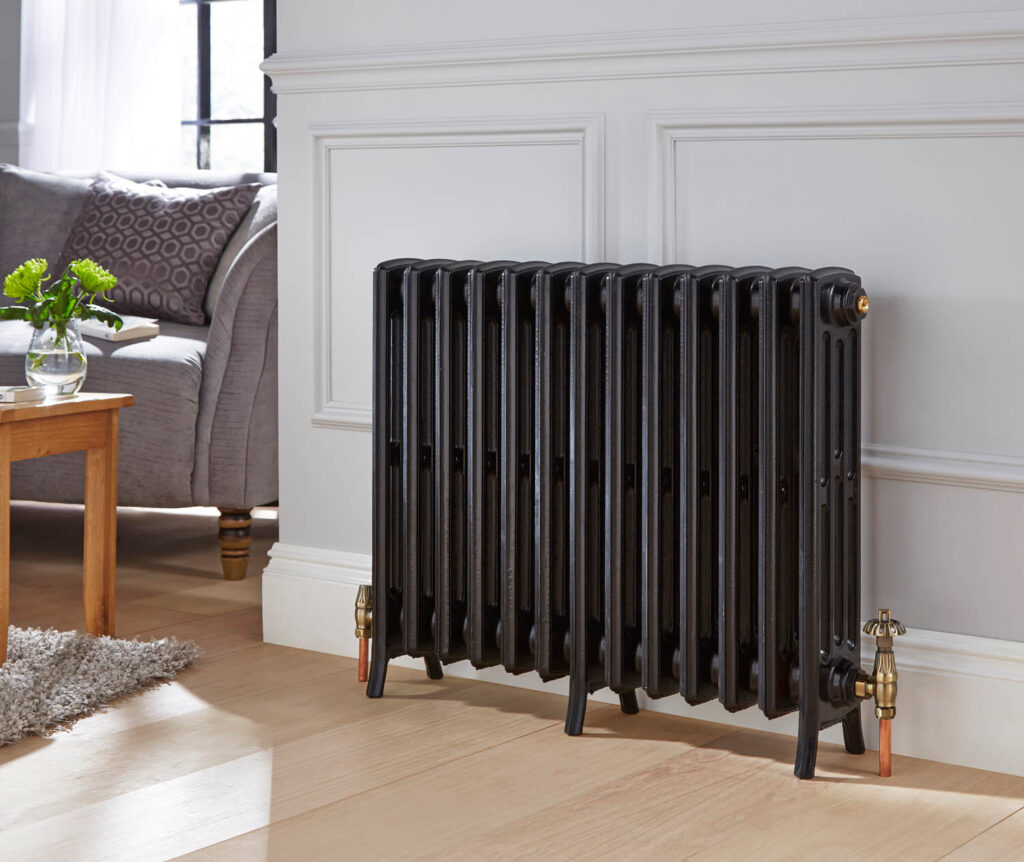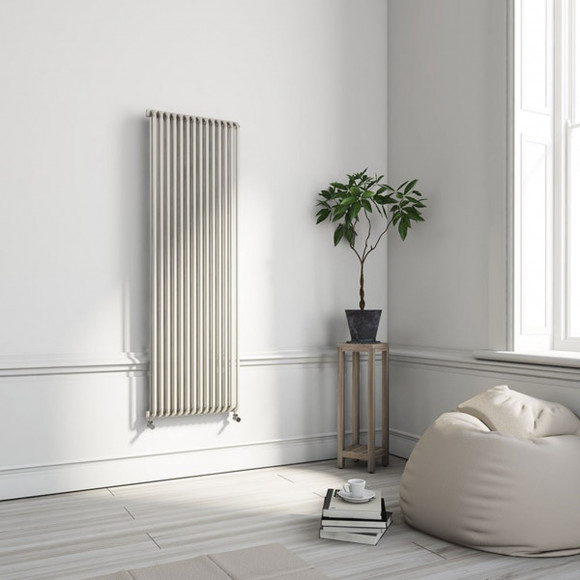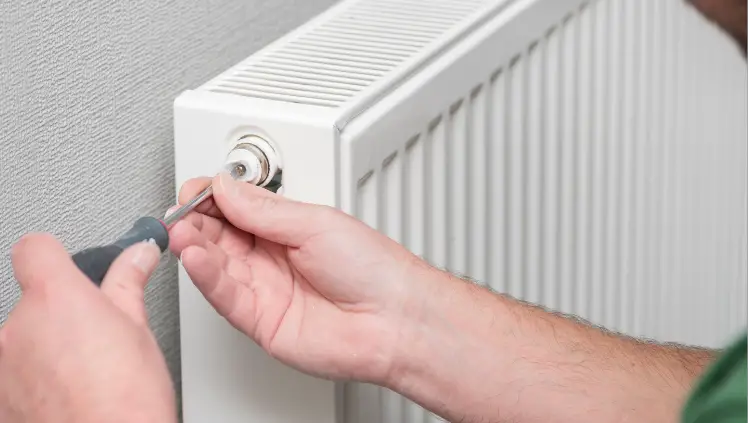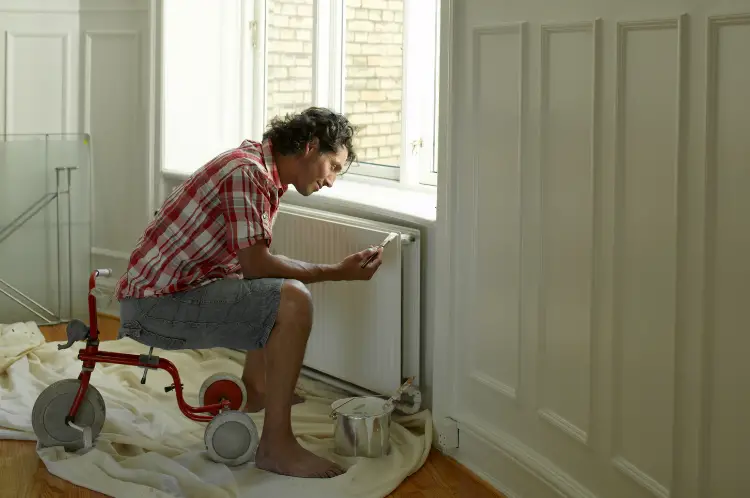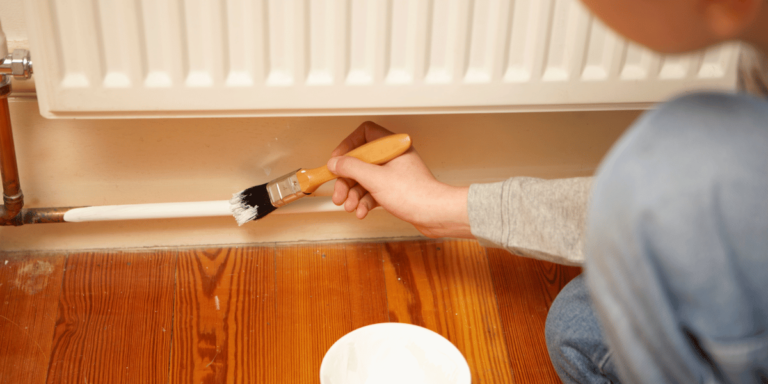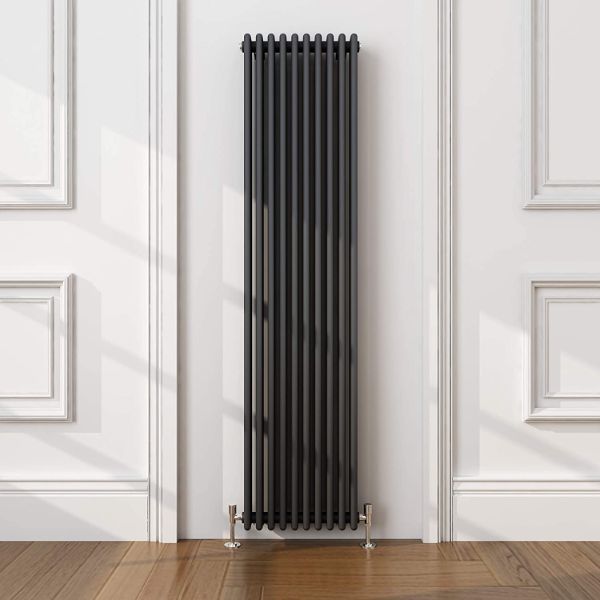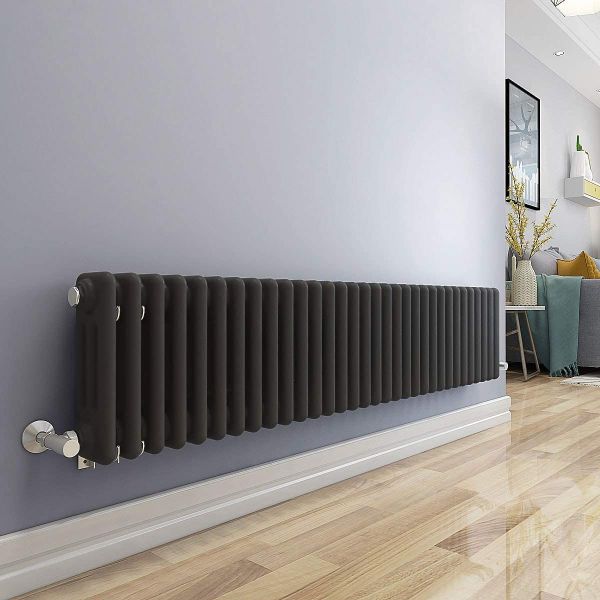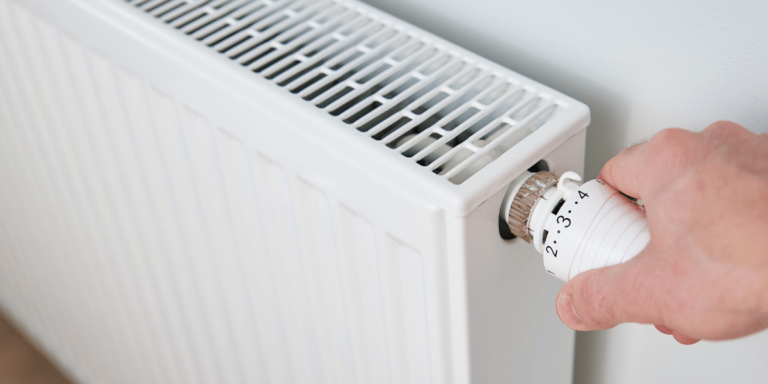When it comes to home heating, one crucial decision you’ll need to make is whether to opt for horizontal or vertical radiators. Both types have their unique set of advantages and drawbacks, and the choice is often dictated by factors such as space, design preferences, and heating efficiency.
In this article, we’ll explore the differences between horizontal and vertical radiators, discuss their pros and cons, and help you determine which type of radiator is the best fit for your home.
Let’s paint a picture. Imagine you’re standing in a room full of radiators: some reaching up to the ceiling, others running along the wall horizontally. Awe-inspiringly beautiful! And yet, each type has its own purpose and style. So why should you choose one over the other? Let’s explore…
Horizontal Radiators
Horizontal radiators are the traditional choice for many homes. They are typically installed underneath windows or along walls, and they are designed to distribute heat evenly throughout the room.
When you think of a radiator you’ll likely picture a white, horizontal panel radiator – these are the most common types of radiator that you’ll find in UK homes, and for good reason. They’re cheap, efficient and pretty durable too.
However, that’s not to say that they’re boring though! They now come in a myriad of colours, shapes, sizes and designs…
Advantages of Horizontal Radiators
- Wide range of designs: Horizontal radiators are available in various styles, materials, and sizes, making it easy to find one that suits your interior design.
- Efficient heat distribution: The horizontal design allows for even heat distribution across the room, ensuring a comfortable temperature.
- Easy installation: They are generally easier to install than their vertical counterparts, as they require less wall space and do not need additional support brackets.
Disadvantages of Horizontal Radiators
- Space consumption: Horizontal radiators can take up valuable wall space, limiting your options for furniture placement or wall decorations.
- Less visual impact: These radiators may not stand out as a design feature compared to vertical models.
Vertical Radiators
Vertical radiators, also known as tall or upright radiators, are a modern alternative to the traditional horizontal design. They are usually installed on walls and can save floor space, making them a popular choice for rooms with limited square footage.
Advantages of Vertical Radiators
- Space-saving: Vertical radiators require less wall space, freeing up room for other design elements or furniture.
- Design options: They are available in a wide variety of styles, colors, and materials, allowing you to make a bold design statement in your home.
- Increased heat output: Due to their taller design, vertical radiators can produce more heat per square inch of floor space compared to horizontal models.
Disadvantages of Vertical Radiators
- Higher installation costs: Vertical radiators may require additional support brackets and a more complicated installation process, resulting in higher costs.
- Less even heat distribution: Heat may rise to the top of the room more quickly with vertical radiators, leading to a less even distribution compared to horizontal models.
Comparing Horizontal and Vertical Radiators
Space and Installation
When it comes to space and installation, vertical radiators have the edge over horizontal models due to their minimal wall space requirements. This makes them ideal for smaller rooms or areas where wall space is limited.
Heat Output and Efficiency
Both horizontal and vertical radiators can provide sufficient heat output, but vertical radiators generally have a higher heat output per square inch. However, horizontal radiators tend to distribute heat more evenly across the room due to their design. In terms of efficiency, both types can be equally effective, depending on factors such as room size, insulation, and radiator quality.
Design and Aesthetics
Design preferences are subjective, but vertical radiators are often seen as more modern and stylish compared to horizontal radiators. They come in a variety of designs, colors, and materials, allowing homeowners to make a bold statement with their heating solutions. On the other hand, horizontal radiators offer a more traditional and understated look that blends seamlessly into various interior styles.
Price and Maintenance
The price of radiators varies depending on factors such as size, material, and design. Generally, vertical radiators can be more expensive due to their unique design and installation requirements. In terms of maintenance, both horizontal and vertical radiators require regular cleaning and occasional bleeding to ensure optimal performance.
Choosing the Right Radiator for Your Home
To determine the best radiators for your home, consider factors such as available space, design preferences, heating requirements, and budget. If you have limited wall space or want a more modern design, vertical radiators may be the better choice. However, if you prefer a traditional look and need even heat distribution, horizontal radiators could be more suitable.
Ultimately, the choice between them depends on your individual needs, preferences, and home layout. By considering factors such as space, design, heating efficiency, and budget, you can make an informed decision and select the perfect radiator for your home
No matter your preference, it’s important to consider all factors when selecting the ideal radiator for your home; from size and shape to efficiency and aesthetics. Radiators come in all shapes and sizes so take your time to find the one that best suits your needs – after all, it’s an investment that will last for years!
FAQs
Are vertical radiators less efficient than horizontal ones?
No, vertical radiators are not necessarily less efficient than horizontal ones. They may have a higher heat output per square inch but could distribute heat less evenly compared to horizontal radiators. Efficiency ultimately depends on factors such as room size, insulation, and radiator quality.
Can I convert my horizontal radiator to a vertical one, or vice versa?
Converting a radiator from horizontal to vertical or vice versa is not recommended, as the design and construction of radiators are specifically tailored to their intended orientation. It’s best to purchase a radiator designed for the orientation you need, although there are some models that can be installed interchangeably.
What material should I choose for my radiator?
Common radiator materials include steel, aluminum, and cast iron. Steel is cost-effective and durable, aluminum offers lightweight and quick heat-up times, and cast iron retains heat longer but takes more time to heat up. The best radiator material depends on your specific needs and preferences.
How do I choose the right size radiator for my room?
To choose the right size radiator, you need to calculate the room’s heat output requirements, measured in BTUs (British Thermal Units) or watts. This can be done using an online radiator size calculator, which considers factors such as room dimensions, insulation, and window size.

